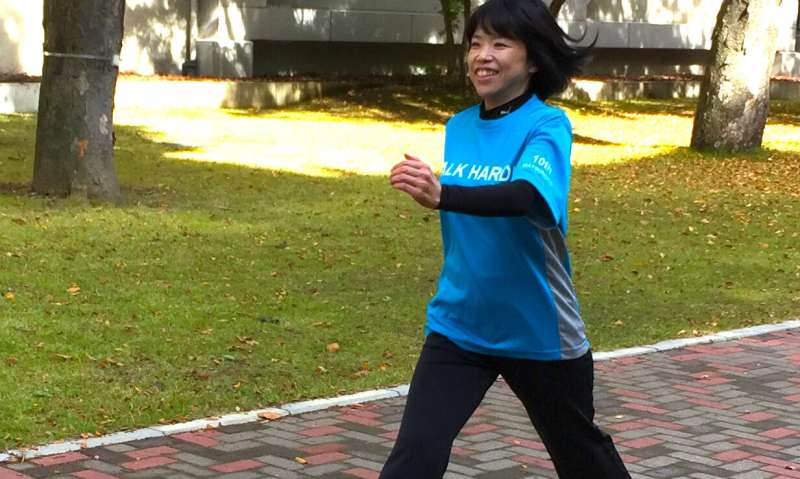Quality over quantity: Interval walking training improves fitness and health in elderly individuals

In Japan, health-conscious folks have been known to carry around pedometers to track the number of steps they walk everyday. The target number: 10,000 steps, as a foundation for a healthy lifestyle. Conscientious walkers can now update their device from a pedometer to a smartphone and forget about ten thousand steps with the latest study from Dr. Shizue Masuki of Shinshu University who found an effective way to increase overall fitness and decrease lifestyle-related disease (LSD) through Interval Walking Training (IWT). It's not how much you walk, but how intensely you do so for a minimum amount of time to get positive results. This finding may be welcome news for those who want to save time and get the most out of their workout.
Interval Walking Training is the method of walking at 70% of the walker's maximum capacity for 3 minutes, then at 40% of their capacity for the next 3 minutes. This is continued for 5 or more sets. Dr. Masuki studied a group of 679 participants with a medium age of 65 over the course of 5 months. Every two weeks data was collected from participants at a local community office and via the internet through the data measuring device (triaxial accelerometer). The triaxial accelerometer is a device that beeps to let the walker know when they are working at at least 70% of their peak aerobic capacity (VO2peak), and at 3 minutes to switch. It recorded their walking data to the central server at the administrative center for automatic analysis.
VO2peak is the amount (volume) of oxygen (O2) the body is able to use during physical activity. It is the milliliters of oxygen used by kilogram of body weight per minute. It is determined by measuring the concentration of oxygen and carbon dioxide in the participants breath. When the VO2 number reaches a figure and plateaus during intense exercise, that is the maximum amount of oxygen the person is able to utilize, and is an indicator of fitness. The higher the number, the more they are able to use, and the more intensely they can exert their body. Endurance athletes such as cyclists can have a VO2peak in the 70s.
Dr. Masuki found that her method outperformed the recommendation of the American Heart Association that to achieve peak oxygen capacity 75 minutes a week of high-intensity workout is needed for improvement. Participants in Dr. Masuki's study had significant improvements in their aerobic capacity (VO2peak), with 50 minutes of IWT a week. Improvements to their VO2peak were plateaued above 50 minutes a week.
With the study published in the Mayo Clinic Proceedings, Dr. Masuki's participants achieved a 14% increase in VO2peak and a 17% decrease in lifestyle-related disease (LSD) through IWT. This method is highly desirable due to an ease of maintenance. Many participants remained highly motivated and went beyond their prescribed regimen and does not require expensive equipment to administer.
More information: Shizue Masuki et al, High-Intensity Walking Time Is a Key Determinant to Increase Physical Fitness and Improve Health Outcomes After Interval Walking Training in Middle-Aged and Older People, Mayo Clinic Proceedings (2019). DOI: 10.1016/j.mayocp.2019.04.039




















